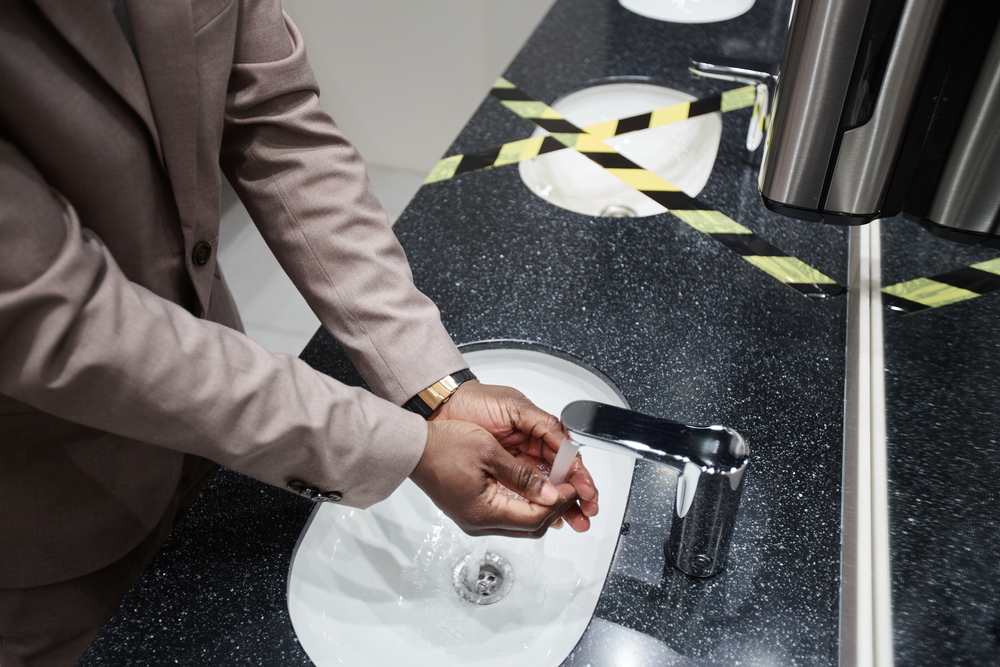The monitoring of employee bathroom breaks, once considered beyond the scope of workplace oversight, has emerged as a contentious practice in modern business operations. This shift reflects broader changes in workplace management and raises important questions about privacy, productivity, and employee rights in an increasingly monitored work environment.
The productivity paradigm
Modern workplace efficiency metrics have led some organizations to track every minute of employee time, including bathroom breaks. In industries where time directly correlates with output, such as manufacturing, logistics, and customer service, employers calculate that unmonitored breaks could impact operational costs significantly.
Key productivity concerns include:
- Production line disruptions
- Customer service response times
- Team workflow interruptions
- Schedule coordination challenges
- Coverage requirements
- Service level agreements
- Performance metrics maintenance
Research indicates that closely monitored employees often report increased stress levels and decreased job satisfaction, potentially offsetting any productivity gains through decreased morale and higher turnover rates.
Health and safety implications
Workplace bathroom monitoring occasionally stems from genuine health and safety considerations. Industries involving hazardous materials or high-risk environments may require strict protocols for employee movements and absences.
Health monitoring considerations include:
- Exposure time to harmful substances
- Dehydration prevention in hot environments
- Regular break compliance
- Physical strain indicators
- Workplace injury prevention
- Emergency response readiness
- Occupational health compliance
Medical professionals emphasize that restrictive bathroom policies can lead to health issues, including urinary tract infections and kidney problems, particularly affecting workers who may delay necessary breaks due to monitoring pressure.
Workplace conduct oversight
Organizations implementing bathroom monitoring often cite the need to prevent potential workplace misconduct. This includes addressing concerns about extended breaks, unauthorized activities, and time theft.
Common monitoring approaches include:
- Break duration tracking
- Frequency pattern analysis
- Electronic access systems
- Location monitoring
- Time management software
- Supervisor oversight
- Attendance documentation
Labor advocates argue these measures can create hostile work environments and may violate basic human dignity. Progressive organizations increasingly focus on results-based performance metrics rather than time-based monitoring.
Legal framework and compliance
Workplace monitoring practices operate within complex legal parameters. While employers maintain certain rights to protect business interests, they must balance these against employee privacy rights and labor regulations.
Critical legal considerations include:
- Privacy protection laws
- Labor rights regulations
- Reasonable accommodation requirements
- Discrimination prevention
- Medical privacy compliance
- Union agreement terms
- State-specific workplace regulations
Employment law experts recommend that organizations develop clear, written policies regarding bathroom break monitoring, ensuring compliance with applicable regulations while respecting employee rights.
Technology and management evolution
The rise of sophisticated workplace analytics has enabled more detailed employee monitoring. Modern management systems can track various workplace behaviors, including bathroom break patterns, as part of broader performance analytics.
Current monitoring technologies include:
- Smart access cards
- Biometric systems
- Time-tracking software
- Motion sensors
- Production monitoring tools
- Attendance management systems
- Performance analytics platforms
Impact on workplace culture
The implementation of bathroom monitoring significantly affects organizational culture and employee relations. Companies must carefully weigh the perceived benefits against potential negative impacts on morale and retention.
Cultural considerations include:
- Employee trust levels
- Workplace autonomy
- Professional dignity
- Team dynamics
- Company reputation
- Recruitment challenges
- Employee mental health
Moving forward
Organizations considering bathroom break monitoring must develop balanced approaches that address legitimate business concerns while maintaining employee dignity and trust. Success requires transparent communication, fair policies, and recognition of basic human needs.
Recommended practices include:
- Clear policy communication
- Employee input consideration
- Regular policy review
- Privacy protection measures
- Reasonable break allowances
- Medical accommodation procedures
- Alternative management strategies
The future of workplace monitoring will likely continue to evolve with technology and changing workplace norms. Organizations that prioritize both operational efficiency and employee well-being are better positioned to navigate this challenging aspect of modern workplace management.
This story was created using AI technology.












